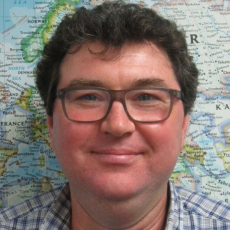Project Abstract
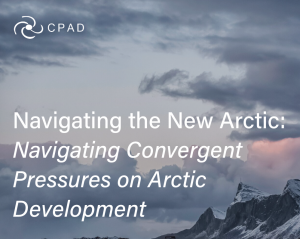 Few transformations are as dramatic or as complex as those occurring now in the Arctic. There are rapid changes in climate and the environment, in international treaties and regulations, in national security, and claims for territory. At the same time, Arctic communities and Indigenous Peoples are looking to find their place in a changing global economy. This convergence of changes and aspirations is leading to questions about what kinds of infrastructure are needed, where it should be located, and how this may impact Arctic people and environment. This project is using a combination of observations, satellites, maps, and models to identify where useful and viable locations for new development might be located. These kinds of data and analysis have not been combined before to make such an assessment. These locations are then explored with communities, emergency managers, environmental scientists, industry representatives, local governments, and members of Indigenous groups. Through this merging of environmental sciences, real-world engineering, financial analyses, and cultural concerns, the project is documenting likely future developments and understand their impacts on the Arctic environment and its people.
Few transformations are as dramatic or as complex as those occurring now in the Arctic. There are rapid changes in climate and the environment, in international treaties and regulations, in national security, and claims for territory. At the same time, Arctic communities and Indigenous Peoples are looking to find their place in a changing global economy. This convergence of changes and aspirations is leading to questions about what kinds of infrastructure are needed, where it should be located, and how this may impact Arctic people and environment. This project is using a combination of observations, satellites, maps, and models to identify where useful and viable locations for new development might be located. These kinds of data and analysis have not been combined before to make such an assessment. These locations are then explored with communities, emergency managers, environmental scientists, industry representatives, local governments, and members of Indigenous groups. Through this merging of environmental sciences, real-world engineering, financial analyses, and cultural concerns, the project is documenting likely future developments and understand their impacts on the Arctic environment and its people.
Alongside amplified Arctic environmental change, changes in global markets, regional geopolitics, and community aspirations are motivating visions of new opportunities to develop or enhance new industries in shipping, resource extraction, tourism, and fisheries. At the same time, Arctic communities and Indigenous peoples are making clear their aspirations for the future. This project asks how these converging pressures will shape Arctic development between now and 2050. The project is using an approach that is novel through its convergence of diverse disciplines, as follows. Plausible locations for development are being identified using natural resource distributions, national- and company-level ambitions, and community aspirations. High-resolution climate scenarios, observations, and satellite data are providing the environmental context for access and safety requirements. Financial and environmental assessments, regulations, and treaties provide a third layer of evaluation. The integrated product is then interrogated in an iterative manner with an independent International Reference Group of academic, Indigenous and practitioner experts. Through this process, the project is developing an assessment identifying convergent geophysical and socioeconomic pressures on Arctic development, and their potential cascading impacts on local communities, the environment, global commodity chains, and international relations. This assessment seeks to provide a knowledge resource for engagements in grounded community-based research as well as supporting communities, governments, businesses and industries seeking to navigate the New Arctic.
Logistics Summary
This large collaboration consists of Lynch (2022599, LEAD, Brown), Tingstad (2022523, Rand), Streletskiy (2022504, GWU), Pavelsky (2022554, UNC), Goldstein (2022588, Babson), Brigham (2022571, UAF), and Bailey (2022657, UCAR) and will explore how converging geophysical and socioeconomic pressures shape Arctic development between now and 2050. CPAD (Convergent Pressures on Arctic Development), a multi-institution consortium, will address this issue through a pan-Arctic, multi-scaled analysis of geophysical climate change, economic potentials, and evolving structures of management and sovereignty. The central objective is to identify robust and grounded loci where development pressures are most likely to converge in the future, and to assess the long-term implications of their development for Arctic communities, environments, industries, and international policy. CPAD will employ methodological tools of policy dynamics analysis, structured and semi-structured interview methods, geographic information systems (GIS), remote sensing, geophysical and statistical modeling, and climate system simulation. Via a subaward with Nordland Research Institute, in years 2 and 5, a field team member will travel to Kirkenes, Norway to conduct semi-structured interviews to develop a pan-Arctic assessment of plausible development trajectories, which will then be reexamined more deeply in the regional context of Kirkenes. Via another subaward with the University of Hong Kong, a field team member based in Hong Kong will conduct interviews with government officials and businesses interested in Arctic development projects in China and South Korea. Over the five years the researcher will leverage existing ties with local communities and investors in Alaska and northern Canada to conduct interviews and observations regarding these stakeholders' perspectives on development in an increasingly globalized Arctic. In year one, a researcher will spend approximately 2 weeks in Utqiagvik and Nuiqsut, and a week in Iqaluit, Nunavut CA (and additional locations to be determined) to conduct interviews with representatives of Alaska Native Corporations and other Alaskan officials which are working on Arctic development.
2021 Alaska - Nuiqsut
2021 Alaska - Utqiaġvik (Barrow)
2021 Canada - Iqaluit, Baffin Island
2021 Norway - Kirkenes
2025 Norway - Kirkenes
Project Location
Website
Project WebsiteDates
-Location
Nuiqsut, AK; Utqiaġvik (Barrow), AK; Iqaluit, Canada; Kirkenes, NorwayMembers
Principal Investigator

Principal Investigator

Principal Investigator
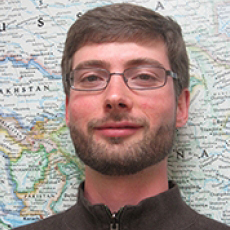
Principal Investigator

Principal Investigator
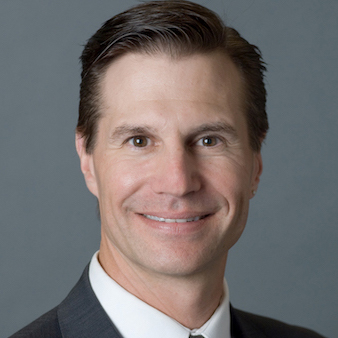
Principal Investigator

Principal Investigator

Co-Principal Investigator
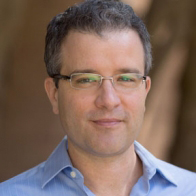
Co-Principal Investigator
